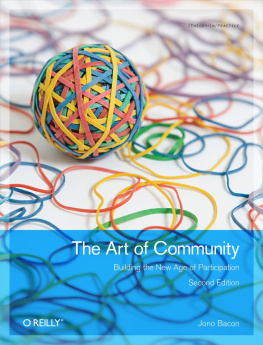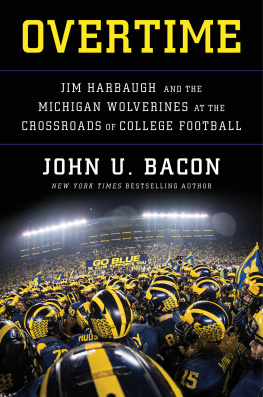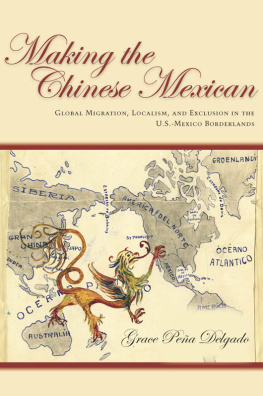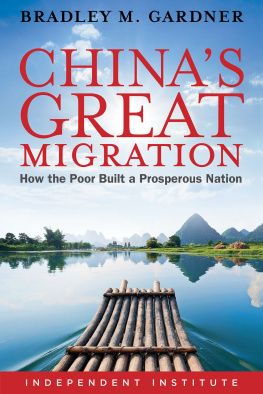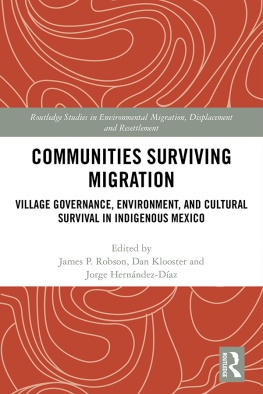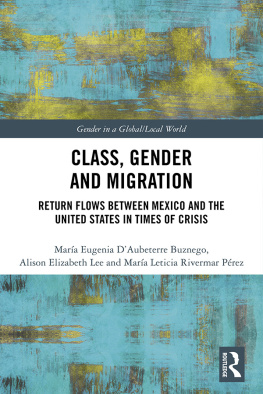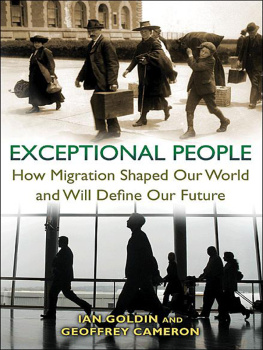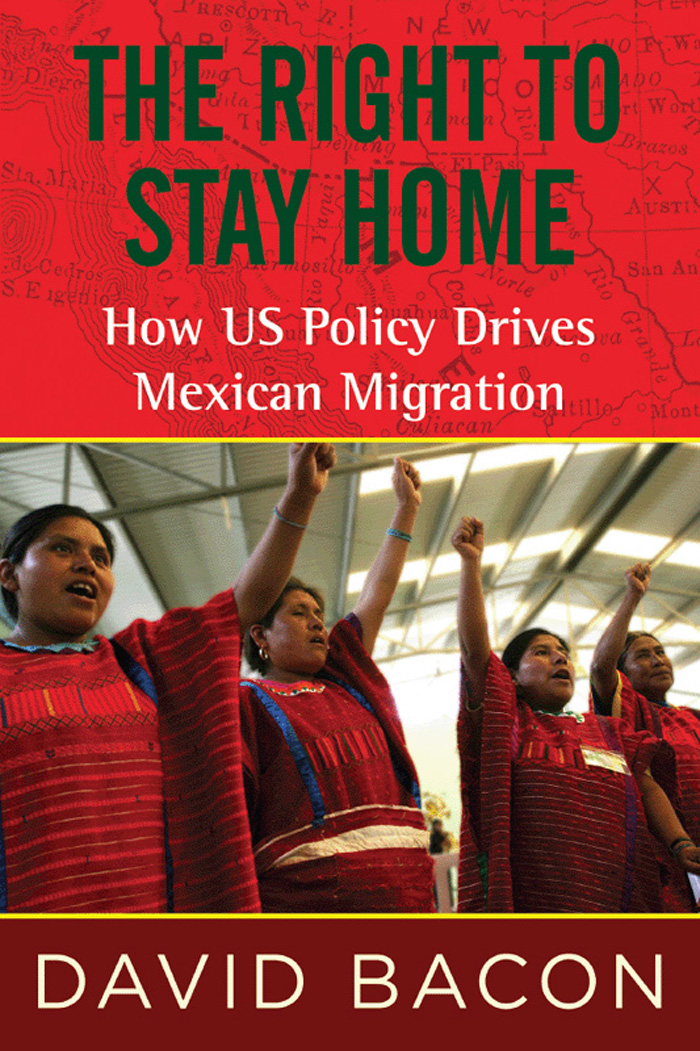THE RIGHT TO STAY HOME
How US Policy Drives Mexican Migration
DAVID BACON
BEACON PRESS, BOSTON
CONTENTS
Keith Ludlum and Terry Slaughter
INTRODUCTION
When I left the organizing staff of the United Farm Workers in the late 1970s, I took with me some functional working-class Spanish and a new worldview. I grew up in Oakland, California, and knew nothing about Mexican culture before I left the Bay Area to work in rural California and Arizona. In the union I began to learnthe UFW was a great teacher, and Ill always be grateful to the workers and organizers I met there for changing my life.
I was a pretty good organizer in a union that had some of the best. I helped workers pull together their committees and picket lines, and fight the foremen and the growers. I have good instincts and grew up in a left-wing family, so in many ways my own culture fit pretty well. And I really loved the unions culture. Holding hands and singing in union meetings! Eating lunch and talking in the grape rows or under the tangerine trees. No sleep.
Heres how the day went during just one campaign in Calexico and the Imperial Valley. Wed have meetings of worker/organizers til midnight, then meetings with the campaign leaders til one, then get up at three to get down to the Hoyo when workers were crossing the border, then drive in the dark up to Blythe, then talk for hours next to the field with workers waiting for the ice to melt on the lettuce, then house visits after work in Mexicali, and then the meetings in the evening all over again.
You get the idea. Exhausting. Inspiring. You learn a whole world in a short time.
The other thing I took with me leaving union staff, or rather didnt take with me, was money. I had to get a job quickly, to pay child support and just to live. So I went to Salinas to get a job picking strawberries. I couldnt last a week bending over that far, and my hands were far too slow. So I went over to Hollister to get a dispatch at the union hall to work the wine grape harvest at Almaden, then one of the worlds largest wineries.
A thousand workers showed up the morning the picking started. I was the only white guy. Most knew each other from previous harvests, so they quickly formed crews and went to work. A few dozen were left, and from them each tractor driver picked the six who would pick behind his gondola. Finally there were just six left. It was like not getting picked for softball in junior high.
Our crew, the final six, made up the slowest pickers in Paicines, Almadens long valley of grapevines south of Hollister. So with typical Mexican irony, we called ourselves Los Relampagosthe Lightning Bolts. We never made much more on the piece rate bonus than the hourly guarantee, and my crewmates were pretty impatient with me. Each crew of six splits credit for what they all pick, so the faster pickers basically carry the slower ones.
Almaden and the Hollister UFW office were self-administered by the workers elected ranch committee. That was a tradition in the wine grapes and was also true of the union at companies like Christian Brothers and Paul Masson. In all these companies, workers themselves did most of the original organizing, helped by Jose Luna, a legendary worker/organizer who expected them to carry most of the load in running the union.
I earned my credit with my crewmates when the company decided to bust the number-one tractor driver on the Almaden seniority list, accusing him of sleeping on the job. By sending him back into the picking crews, he would have lost not only his place in the list but a good year-round job driving a tractor. His family would have been thrown out of their company-owned house.
I suggested that we hold a company-wide meeting in front of the office in Paicines at lunchtime and then refuse to go back to work until the company talked with us. Farmworkers organize work stoppages a lot, so the idea wasnt that strange. The company did agree to talk with us. We called in Bill Granfield from the Salinas UFW office, knowing that the managers needed to save face by seeming to agree with the unions official representative rather than with us, the workers. Bill, a good organizer, knew the game too and played his part well. Our driver got his job back, and after that my crew might not have been fast, but we were well loved, me included.
I lived in an SRO farm labor hotel in Hollister in a room found for me by Roberto San Roman, head of the ranch committee. When the picking was done, I drove over to Watsonville and got a dispatch out to a cauliflower crew. I worked in that crew for a good part of a year. It didnt pay too wellby the hourbut you can work standing up, cutting off the cauliflower heads with a machete and throwing them on the belt of the machine in front of you.
Here I learned something about Mexican culture that I still think and write about today, more than thirty years later. Our crew had a group of Oaxacans, the first Id met (and probably among the first of the huge wave of folks who came to California from Oaxaca in the years that followed). They mostly ate lunch with each other and spoke a language Id never heard but I knew wasnt Spanish.
We had a problem in this crew too. The foreman decided to stop giving us the whetstones we needed to sharpen our machetes. A dull machete makes the work many times as hard and messes the plants up too. So we decided to forget to bring our machetes with us one morning. When we went to talk with the Oaxacans, they all listened politely and then went off by themselves to talk about what wed proposed. After a while, they came back and agreed.
The little paro did the trick. We got our stones back. And I could see that the way these (I learned later) Mixtec workers made their decisions was different. It wasnt each person on his or her own but the group acting like a community, making a collective decision that everyone implemented. Almost like a union within the union.
The experience resonated with me through the years after I left the fields to work in factories, then for other unions, and then as a journalist and photographerthe work I do today. In a life spent in the labor and immigrant rights movements, I seem to learn over and over again that the strength of indigenous culture is one of the most important resources these movements have.
This book looks at migration and work as theyre experienced and discussed by migrant communities. Indigenous people play a very important part in that discussion. The way that experience is analyzed and the proposals people make are way ahead of the way migration and work are presented in the halls of government or in the mainstream media. If the dialogue on migration seems so poisonous in the United States, and so devoid of any ability to make political progress, its in large part because this migrant and indigenous perspective is absent from it.
This is not a pitch for saying that migrants have the answer and all we need to do is to listen to their voices. There are millions of migrants and millions of voices. But the social movements of resistance to the brutal human cost of globalization in Mexico (and by extension, in other migrant-producing countries) and the movements for the human and labor rights for migrants in the United States and Canada, have made unique progress in the last two decades.
Theyve developed a framework for seeing the connection between the displacement of people in their countries of origin and the exploitation and repression of those communities in the countries where they go to work. Some of their proposals for human rights for migrants in the United States and Canada have won some attention. But the proposals in Mexico, especially for the right to not migrate, that is, for alternatives to forced migration, have not. And even more important, the link between the two has received no attention at all.



